You know what a gun is, right? Sure you do. You've probably seen at least one on television within the last 24 hours, or used one in a video game to kill a bad guy (or, as a friend pointed out, a good guy). Guns are everywhere in the media, and even someone who has never actually fired one in real life can probably point to the dangerous end with adequate proficiency.
Despite the fact that guns are relatively commonplace in the modern world, there are writers out there who want to create scenes involving realistic gun use, but don't actually want to fire a gun themselves. This article will hopefully serve as a substitute so that authors can give their gun-wielding characters the right hardware and terminology to be believable. If you aren't sure what the correct size of pistol bullet should be, or aren't completely sure what the difference between a machine gun and a submachine gun is, then hopefully I can help.
Helpful Terms
I tried writing this article without a terms section, but I constantly had to stop and define words in the middle of my paragraphs, so ultimately, this will help keep the information clean. If you see a word you don't know, you can check here, or use Wikipedia's more comprehensive list. Remember that guns are machines with lots of little parts, and the terms you use matter as much with guns as they do with cars and particle accelerators.
Automatic: A weapon that automatically loads the next bullet after firing the one in the chamber. A fully automatic weapon will fire a continuous stream of bullets as long as the trigger is held down. While fully automatic weapons are typically long guns, some pistols can be automatic as well.
Barrel: The long tube on the gun through which the bullet travels on its way out. Barrels of many guns contain "rifling," which is a set of grooves inside the tube that spin the bullet, giving it a more stable flight.
Blank: A round with gunpowder, but no projectile. This allows it to make the explosive sound of a gunshot without actually firing a bullet. Keep in mind that blanks can still be dangerous, as they still contain live gunpowder, and accidents involving blanks have claimed lives, including that of actor Brandon Lee.
Bolt action: A gun (typically a rifle) that requires a user to pull back on the bolt in order to eject a bullet casing and chamber a new round. Bolt action rifles were the primary military weapons in World War I and still around during World War II, but now are more popular with hunters and marksmen.
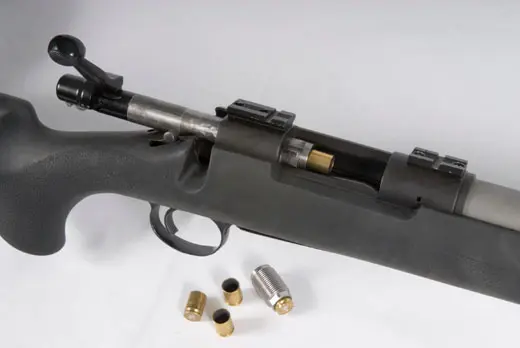
Burst: Refers to a mechanism which will fire a set number of bullets with each squeeze of the trigger. For instance, the M16A2 rifle can fire three bullets at a time with each pull of the trigger.
Clip: This is really nothing more than something that holds a bunch of loose bullets together for loading into the weapon or magazine. These bullets could be loaded by hand one-by-one, but a clip makes it faster and easier. A clip is not a magazine (see definition of magazine below).

Chamber: The place where a bullet is held before it is fired from the gun. Revolvers usually have six chambers (collectively called a cylinder), while most other modern weapons have only one.
Firing pin: A small rod between the hammer and the bullet. When the trigger is squeezed, the hammer strikes the pin, which then strikes the primer on the bullet and fires it.
Hammer: The piece of the gun which strikes the firing pin when the trigger is squeezed. Some more modern guns like the Glock pistol don't use a hammer, as well as most bolt-action rifles.
Jacket: A bullet is formed by a core (usually lead) which is then wrapped in a metal jacket, typically copper. Fun fact: the term "full metal jacket" actually refers to the hardened jacket of a bullet.
Kick: Also known as recoil, this is the backward force of a gun as it fires, caused by the force of the bullet accelerating from the chamber.
Magazine: A flat container that holds bullets for magazine-fed weapons. There is a spring at the bottom of the magazine that is constantly pushing bullets up toward the chamber, so each time the gun is fired, the next bullet is automatically pushed into place.
Muzzle: The tip of the gun's barrel where the bullet exits.
Primer: The part of the bullet which, when struck by the hammer, ignites the gunpowder.
Pump action: Usually refers to shotguns, this is a mechanism by which the section under the barrel of the gun can be pulled back, which cycles out the case and loads a new round into place.
Semi-automatic: Each squeeze of the trigger fires a single bullet and loads a new one into place.

The Basics of the Bullet
You know this as a bullet, but this is actually called a cartridge.

The top, silver part is the bullet; this is the projectile that actually leaves the gun and hits the target. The brassy cylinder on the bottom is called the case, and it carries the explosive that propels the bullet. In the days of muskets, the explosive would be loaded directly into the barrel, then the bullet would follow. In modern days, bullets carry their gunpowder with them in the casing.
When your character pulls the trigger of a gun, a chunk of metal (the hammer) strikes the firing pin, a rod inside the gun. This firing pin then strikes the primer on the back of the bullet, which ignites the gunpowder in the case. The explosion blasts the bullet from the gun in whatever direction the barrel is facing. If that's tough to picture, check out this video, which shows the mechanism inside of a semi-automatic pistol:
[video:http://www.youtube.com/watch?v=YKRMcTlbWTs]
Types of Bullets
The first thing to know about bullet terminology is that bullet sizes measure the diameter of the bullet, and can be measured in millimeters or in calibers for reasons I'm not going to get into. You can make some comparison between a bullet's size and its power, but it's not a direct relationship, so you should check that information for any specific bullet you want to research.
A .22 caliber bullet (referred to as a twenty-two caliber) is pretty small, roughly 0.22 inches in diameter. It can certainly kill somebody, but it's generally more useful for killing vermin. A .50 caliber bullet, on the other hand, is used to detonate bombs and people's heads, and it's probably the reason the dinosaurs are extinct. Notice that the bullets are still in the casings in the below picture.

Pistol rounds tend to run from .22 caliber to .45 caliber. Some of the most popular handguns utilize the 9mm round, which is powerful enough to do significant damage, but small enough to carry a lot of them. Pistol bullets also tend to have rounder tips.
Rifle bullets are far more diverse, and look more pointed at the tips. The US military favors the M-16 assault rifle, which carries 5.56 mm rounds, and the AK-47 uses the more powerful 7.62 mm round. Can you guess which is which based on knowing that the above measurements relate to the diameter of the bullet?

Shotguns (discussed below) use special ammunition called shells, and they are measured in gauges. As anyone with gauged ears knows, gauges actually get bigger as the number gets smaller. The most common shotguns are 12 gauge, although 20 gauge shotguns are popular as well.
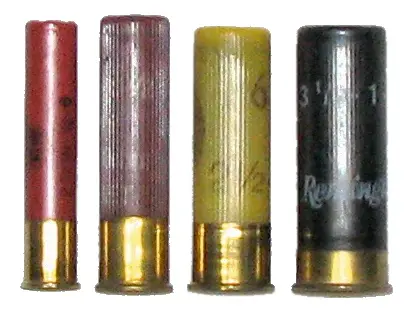
My suggestion would be to focus on what type of gun your character is using, and then look up the type(s) of ammunition used in that weapon. Remember that, as a rule of thumb, police tend to like smaller rounds that are less likely to penetrate walls and hit civilians, while the military favors larger rounds which can punch through armor and travel longer distances. Because the specific firearms for police and military depend on your story's setting, you'll need to research to find out what a character in uniform might be carrying.
Types of Guns
There are a lot of different types of guns out there, and if you're not familiar with firearms, you may be confused as to the different kinds. Let's get a quick introduction to each. This isn't an official or complete list, but rather the ones you're most likely to need in your fiction.
Handguns
Handguns are firearms that are small enough to be fired with one hand (though most professionals use two). They can be further separated into semi-automatic pistols and revolvers.
Semi-automatic pistols are typically going to be magazine-fed handguns. They can typically hold a lot of bullets (usually between 7 and 16) and fire as quickly as you pull the trigger.
Revolvers don't use magazines, and instead rely on a spinning cylinder which loads each bullet into the chamber. Revolvers usually hold five or six rounds, but some models can hold more. Although media has given them a reputation as an archaic and quirky firearm, they are still very popular due to their durability and reliability.

Long Guns
For our purposes, a long gun is pretty much anything that isn't a handgun, but also nothing big enough to be considered artillery.
Rifles are guns that are designed for accurate, powerful fire. The name comes from the grooves inside the barrel, known as rifling, which causes the bullet to spin and become more stable in flight, sort of like a football. A rifle used to be easier to define, but these days, rifles are often automatic and can share characteristics with machine guns. However, the terms are not interchangeable, so take care to study your character's gun and make sure you use the correct terminology.

Shotguns may look a bit like rifles to the inexperienced, but actually work very differently. Instead of firing a bullet, shotguns fire a cartridge that is usually filled with tiny pellets, called shot. These pellets spread as they leave the barrel and cause damage over an area, making shotguns useful for doing large amounts of damage at close range, and increase the chance of hitting a smaller target (like a bird) at longer rangers. Because people are creative, shotgun shells may also be filled with different things, such as flechette rounds and an incendiary round called Dragon's Breath. Be careful; some of the wackier rounds out there are not actually useful in combat, and are more for novelty, so check into it before you give your character an acid-spewing shotgun.
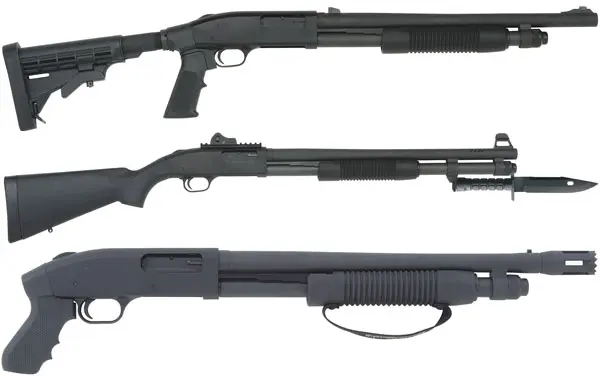
A submachine gun is essentially a long gun that fires pistol rounds. In general, they're mostly advantageous over a pistol or rifle in situations where a character wants more firepower than a pistol can offer, but doesn't want to worry about the problems of too much firepower (like police, who don't want their bullets going through walls and hitting the wrong people).
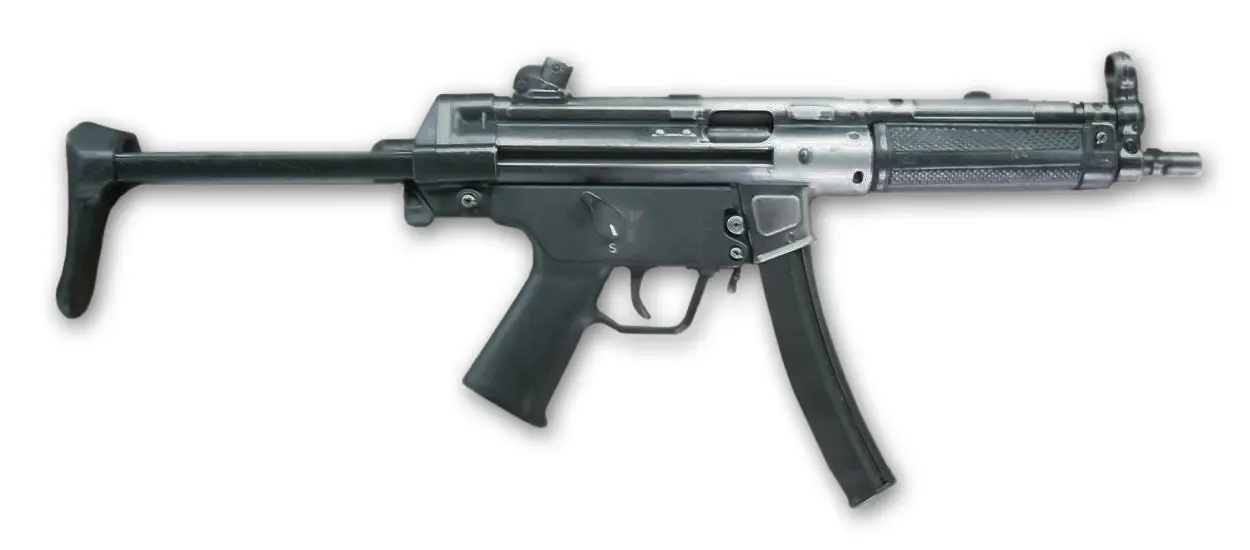
Machine guns are automatic weapons designed for sustained fire. When it's light enough to be carried and fired by a single man, then it's called a light machine gun, but otherwise, the term typically applies to mounted weapons (which I won't be covering here). They are different from automatic rifles in ammunition feeding mechanisms and capacity.
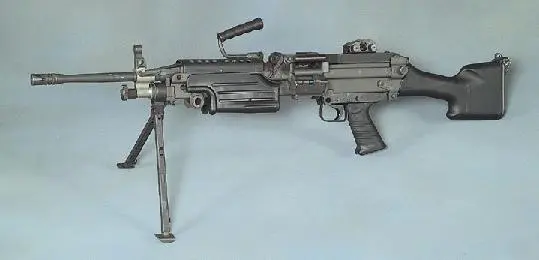
That's the bare-bones terminology lesson. Because of the number of guns and types of ammunition out there, you'll have to research your character's personal sidearm on your own, but I hope this helps you understand the basic differences. We all have to learn them somewhere. Now, on to the more sciencey part of the column.
Gravity Affects Bullets
I can hear you thinking "duh, everything does." And that's true. But it's important enough to reiterate, because the invisibility and speed of a bullet in flight can sometimes make us scratch our heads a bit when trying to apply common rules.
First, gravity affects bullets, regardless of whether they're motionless or in flight. The forward motion of the bullet in no way affects how quickly it falls to the ground. If you drop a bullet at the exact same time and from the exact same height as a firing gun, both bullets will hit the ground at the same time. Don't just take my word for it.
[video:http://www.youtube.com/watch?v=D9wQVIEdKh8]
What this means is that if you are far enough away from your target, then your character will need to arc the bullet up and let it fall to its target. How far away depends on the power and speed of the bullet in question, but it's generally something you can ignore unless your character is a sniper. Also, at those distances, you have to worry about things like wind bursts and the target just walking away before the bullet even reaches him.
You Can't Curve Bullets
Popularized by the film adaptation of the comic Wanted, this is the idea that by doing a complicated and awesome-looking wrist flip, you can cause a bullet to bend in mid-air, allowing you to shoot around obstacles directly in your path. It's a neat idea, and as these columns have come to show, physics can destroy creativity faster than any cubicle.
The reason is because of Newton's First Law, which states that a body in motion stays in motion in that same direction unless acted upon by an outside force. When the bullet is propelled out of the gun, then it goes in whatever direction it was at the moment it left the gun barrel. No forces are acting on either side, so unless a burst of air hits the bullet (which can make a big difference beyond a few hundred meters), the bullet will only go in a straight line. See the below video to understand why things don't curve just because they left a moving container.
[video:http://www.youtube.com/watch?v=B22446MeVTg]
A Bullet Can't Throw a Guy Into the Air
Unfortunately for revolver-toting action heroes everywhere, physics is here again to ruin the day. And try as they might, they can't shoot physics.
When a bullet leaves a gun, there is a corresponding recoil, sometimes known as the gun's kick. Smaller bullets have a smaller kick, and the larger bullets can kick back hard enough to cause injury to an untrained shooter.
[video:http://www.youtube.com/watch?v=vfGUF8T-dUM]
The kick of the gun is due to another foundational physics law from our friend Newton. The third law states that for every action, there is an equal and opposite reaction. In this case, the force of the escaping bullet is going to equal the force pushing back on the gun. Force is mass times acceleration. So it should make sense that a bigger bullet (more mass) is going to have a bigger kick (more force).
That leaves us with two problems, then. First, if a gun is powerful enough to blow someone off their feet, that would mean the kick of the gun is powerful enough to blow the shooter off his or her feet as well, which is just awkward for everyone involved. Second, bullets are very small, which means that huge amount of force is going into a very small area. Human skin is soft (as is most body armor against a high-powered bullet), so instead of knocking the target backward, the bullet will simply pass straight through. There might be enough force to stagger the target, but that's about the best you can hope for.
Think of it this way. I swing three different objects at you with the exact same force. One object is the flat part of a stop sign, one is a baseball bat, and the last is an ice pick. The stop sign might rattle you a bit, but because the force is over a wide area, you may walk away from it just fine. The baseball bat is probably going to do some damage, but it's not going to break the skin, and you'll probably survive the first hit. The ice pick, however, is concentrating that force into the tip of a point, and that point is going to cruise right through you, laughing merrily along the way. Think of bullets as maniacal ice picks.
Gun Suppressors
The sound of a gunshot is due to two different problems. First, when the gunpowder is ignited, it creates a sudden and very hot gas inside the barrel, and when it escapes, it creates a loud popping sound. Second, bullets tend to move very fast, and when they break the sound barrier, you'll hear the accompanying sonic boom (though in a gun, it's more of a sonic crack). There is a third sound created by the machinery of the gun itself, but this can't be muffled with a suppressor, so we'll ignore that part.
A suppressor is a device which attaches to the muzzle of a gun, and it works to reduce the noise of the gunshot. Most suppressors focus on containing and slowly releasing the hot gases in the barrel, which will in turn reduce the sound of the exploding gunpowder. As for the sonic boom, subsonic ammunition can be used to ensure the bullet never breaks the sound barrier. Some suppressors (called integral suppressors) are actually built into the gun, which can greatly reduce the noise as compared to one that is detachable.
Although you'll sometimes hear a suppressor referred to as a "silencer," many gun professionals seem to scoff at the term, as it implies that the gun can actually be "silenced." Contrary to what many movies depict, suppressed weapons are still rather loud, and still sound a lot like a gunshot. So if your character is going to use a suppressed weapon, keep in mind that people in the same room (maybe even the same building) are likely to hear it.
So why use suppressors? Well, muffling the sound of a gunshot can make it much more difficult to tell where the gunfire is coming from, which is definitely helpful in a combat situation where your aim is to avoid getting shot. Also, it does reduce the noise a bit, which some hunters and shooters on gun ranges tend to appreciate for the sake of their ears. Keep in mind that sticking a tube on the end of a gun can alter the course of the bullet, which means that if a gun hasn't been properly tested and zeroed, your hero could embarrassingly miss his first stealth kill and botch the whole spy mission.
[video:http://www.youtube.com/watch?v=qZU5TGljAmw]
Bullets and Explosions
As we've seen in video games and movies, when you shoot a fuel tank, the underside of a car, or one of the conveniently-placed red explosive gasoline barrels, you'll get an explosion that can take out multiple bad guys at once, and give the hero a nice firey backdrop. But can this actually happen?
The answer is... it depends. As I mentioned earlier, most bullets you'll run across have a lead core and copper jacket. Both lead and copper are soft, malleable metals, and they don't tend to spark when struck against other metals. Since a spark would be required to ignite a flammable substance like gasoline, then all most bullets would do is make a hazardous mess someone would have to mop up later.
That being said, some bullets use a steel core rather than lead, and steel definitely can spark. Unless your character is military (at least in the US), your character is less likely to run across steel core bullets due to the fact that many (but not all) types of these bullets are considered armor piercing. In addition, tracer bullets are rounds that carry a charge that ignites, which makes the bullets easier to see. They're often used in machine guns to help the gunner see where the bullets are landing, and can definitely ignite flammable substances. So if your character plans ahead, they can certainly make the types of explosions you might want to feature in the climax of your story.
Conclusion
I have a few suggestions from my friends in the military and law enforcement, who may be reading your books and judging your gun knowledge:
1) If you really want to get it right, at least go to a gun range and watch other people shoot. Chances are that a gun is going to sound very different than what you think it sounds like, and you'll get a better idea of some of the realities of gun use, such as realistic reloading times, malfunctions (such as jamming), and so forth.
2) If you don't know, don't fake it. And you don't know because you've played every single Call of Duty.
3) Related to the above, it's better to be vague than to be specific and wrong. If you don't know the specifics of a Glock .40, then don't call it out exactly as that. Just say "gun" and move on. If the gun plays a big role in your story, or your character is expected to know the specifics of that gun, then you need to learn the specifics of that gun, preferably by talking with someone who has fired one more than a few times.
4) Be careful about using the term "assault rifle." Not only is it notoriously vague term, but it also carries a certain connotation that may or may not actually describe the gun in your story. Many guns look like assault rifles and are not, and many guns that do not look like assault rifles actually are. Many gun people are picky about this due to the current legal complications around the term in the United States.
So what's the take-away message? There are a LOT of people out there who know guns. This isn't the stuff of science fiction, and if you make a mistake here, you're almost certainly not going to slip it by at least a good chunk of your audience. Because this was such a huge topic, my article admittedly had to be a bit generalized, but hopefully you have at least gotten the idea that if you want to feature a gun in your story in any capacity, at least check the Wikipedia page and make sure it works the way you think it does.
Thanks from the bottom of my gut to my anonymous gun friends, who graciously fact-checked this article and helped me look smart on the internet.
Do you have an idea for my next science-themed article? I'm taking suggestions! Drop me some topics in the comments, and if I like it, and feel that I either understand or can research it well enough to explain it, your idea can be the next IMOS article. Also, feel free to call me out if you spot an error anywhere; I'd rather have a perfect article than a reputation for being perfect.

About the author
Nathan Scalia earned a BA degree in psychology and considered medical school long enough to realize that he missed reading real books. He then went on to earn a Master's in Library Science and is currently working in a school library. He has written several new articles and columns for LitReactor, served for a time as the site's Community Manager, and can be found in the Writer's Workshop with some frequency.








